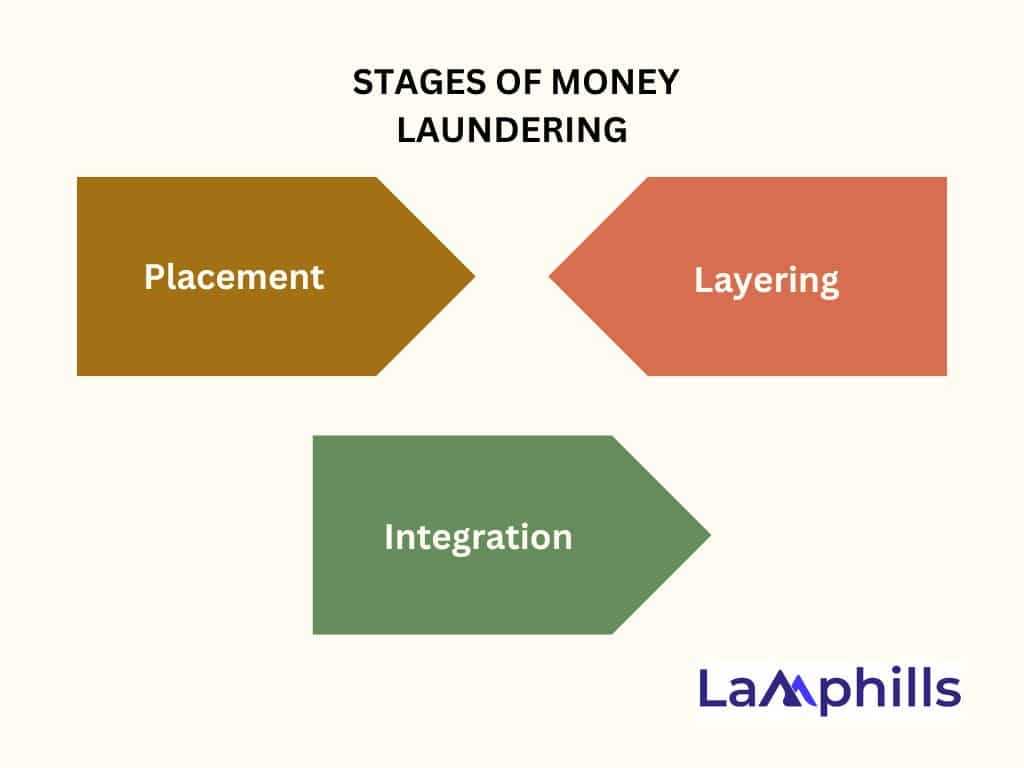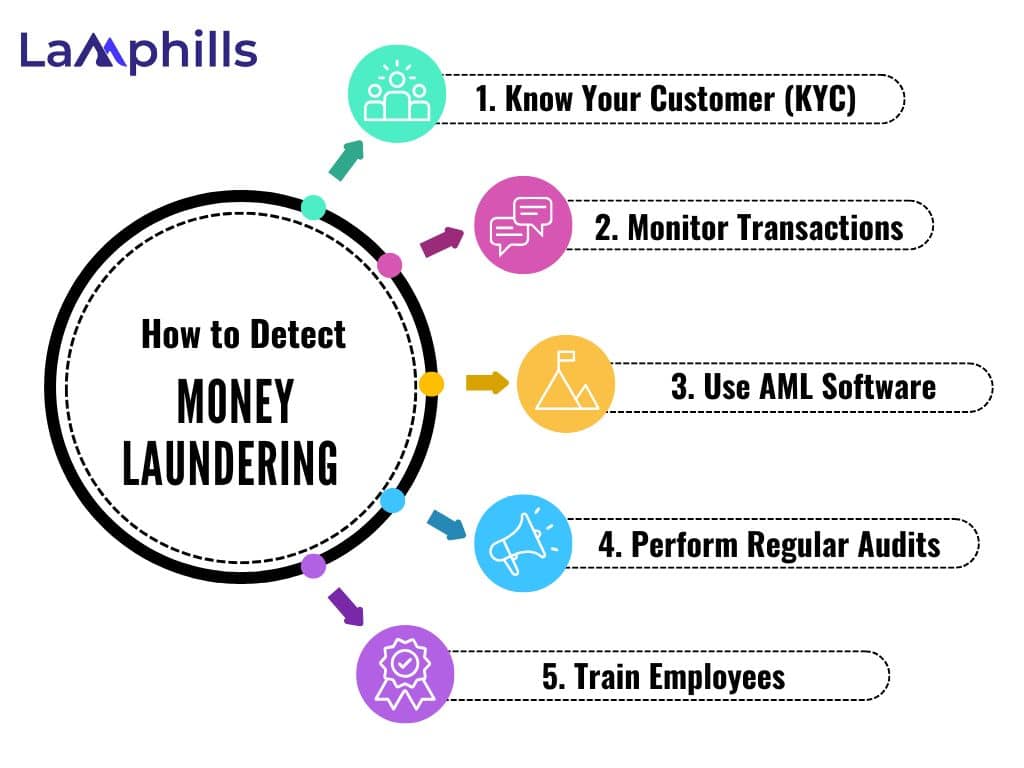Find out how to protect your organization from common money laundering examples. We’ll explore various techniques criminals use to hide their illegal earnings, from simple tactics like smurfing to more complex cyber laundering schemes. This guide offers a clear understanding of these deceptive practices and how you can avoid them.
We often think money laundering only happens in movies or the finance world, but it can affect any industry, even marketing. I’ll never forget the day I first learned about money laundering. I was working on a project with a marketing agency for an international client. Everything was going well until our finance team warned us about some suspicious transactions.
It turned out the client was being investigated for a global money laundering operation. This was a big eye-opener for me, showing how important it is for marketers to be aware of these issues.
Even though UK authorities are working hard to fight this growing issue, it’s important to understand the tactics used by money launderers. By learning about these techniques, you can help keep your organization safe. Remember, Knowledge is key to staying protected.
Keep reading.
Key Points
- Money Laundering Can Happen Anywhere – It’s not just in the movies or finance world; even marketers can be affected by it.
- Criminals use placement, layering, and integration to make illegal money look clean.
- Criminals also hide their money by using fake companies, smurfing (small transactions), real estate, and even cyber laundering.
- Getting unknowingly involved in money laundering can destroy your brand’s reputation and lead to legal problems.
- Know your customers, monitor transactions and use anti-money laundering tools to keep your business safe.
What is Money Laundering
In simple terms, money laundering is the process of making illegally obtained money appear legitimate. It involves a series of complex transactions meant to disguise the origin of the funds. Criminals use this tactic to ‘clean’ their money so it can enter the legal financial system without raising suspicion.
If criminals want to avoid legal trouble, they can’t just spend large amounts of money without showing where it came from. They need to make it seem like the money is from a legal source to avoid being noticed by law enforcement.
To achieve this, criminals often use banks and businesses that handle a lot of cash to make their illegal money look like business profits. Many also create fake companies, known as shell corporations, which don’t do any real business but are used to hide illegal money. This allows criminals, such as drug traffickers, to deposit money into their accounts without raising suspicion or fear of arrest.
For marketers, this matters because being unknowingly involved in such schemes can seriously damage a brand’s reputation and even lead to legal consequences. We work hard to build trust with our audiences; one wrong association can undo years of effort.
What are the Three Stages of Money Laundering?

Money laundering involves three main stages: placement, layering, and integration. These steps help hide where the illegal money comes from, and each stage has its role:
#1. Placement
This is the first step; criminals put their illegal money into the legal financial system. This is often the riskiest part because it aims to separate the money from its criminal source. Placement involves starting with cash and depositing it into a bank.
However, depositing a large amount at once can raise red flags for anti-money laundering (AML) checks. To avoid this, criminals use different placement methods, like converting some of the cash into another currency at a foreign exchange.
#2. Layering
The second stage, layering, is meant to hide the true origin of illegal money by adding more transactions without leaving any clear records. This step includes moving the money around multiple times to create a fake, legitimate appearance.
Criminals often use methods similar to those in the first stage, like buying expensive art or real estate. Layering helps them avoid anti-money laundering (AML) checks, so banks need to confirm customer identities through a solid Customer Identification Program (CIP) to detect such activities.
#3. Integration
In this final stage, the ‘cleaned’ money goes back to the criminal or business and looks totally legal. It can now be invested, withdrawn, or used in lawful transactions. Because of the earlier steps, it’s hard to tell if the money was gained illegally or not. Assets bought during the layering stage, like art, real estate, or cars, can now be used or sold.
Additionally, tracking criminals is difficult because they often send fake invoices to shell companies for payments, even though no real goods or services were provided.
Now, what are some examples of money laundering schemes? Here are some examples of common money laundering schemes.
Common Examples of Money Laundering Techniques
Money laundering is a complicated crime where criminals use various methods to hide the illegal source of their money. From small transactions (smurfing) to online laundering, money launderers always find new ways to avoid being caught.
Here are some of the most common ways money laundering is done:
#1. Shell Companies and Trusts
These are fake companies set up to move money around. Funds are funneled through these businesses, making the money appear legitimate. A well-known case involves the Panama Papers scandal, in which numerous companies were exposed as vehicles for laundering money globally.
Criminals set up these companies, often in foreign countries, to cover up the real source of their wealth. Both shell companies and trusts take advantage of loopholes in the financial system and global regulations to continue laundering money.
Shell companies usually don’t have real business activities and are just there to cover up the money trail. They allow money to move between different accounts, making it look like normal business transactions. By using multiple shell companies, criminals create a complex web that makes it harder for authorities to track the money’s origin.
Trusts work similarly by creating a barrier between the real owner and the illegal money. In a trust, a trustee holds the assets for someone else (the beneficiary). Trusts provide anonymity, especially when they are set up in countries with strict privacy laws or weak oversight, making investigations more difficult.
#2. Trade-Based Laundering
Criminals manipulate the prices of goods in international trade to disguise the movement of illegal funds. They may overvalue or undervalue goods on invoices to move money across borders. In one example, a luxury car dealership in Europe was found to be inflating car prices to launder money through trade.
Trade-based laundering (TBL) is a way criminals hide money by changing the value, amount, or type of goods being traded. This makes it look like normal business deals, but it’s actually a trick to move money across borders. Criminals might overcharge or undercharge for goods, lie about the quality or type of products, or use fake paperwork like customs forms and invoices.
Because international trade is so big and complicated, it’s hard for authorities to catch this kind of money laundering. Criminals also use fake companies, middlemen, and offshore accounts to make it even harder to trace the illegal activities back to them.
#3. Real Estate Laundering
Real estate laundering is a type of money laundering where criminals hide illegal money by investing it in the property market. They do this to make their dirty money look clean by buying, selling, or renting real estate.
The UK has become a popular place for real estate laundering because of its stable property market and safe investment reputation. Criminals take advantage of gaps in property laws, using fake companies, offshore accounts, or other people to hide their identity and the source of their money.
#4. Smurfing (Structuring)
Smurfing, or structuring, is a money laundering method where criminals break large sums of illegal money into smaller amounts. They deposit these smaller sums into multiple bank accounts to avoid being noticed by financial regulations that require banks to report large transactions (for example, over £10,000 in the UK).
Criminals often hire people, known as smurfs, to make small deposits or purchases using different accounts or financial institutions. By keeping these transactions below the reporting limit, they avoid raising suspicion or alerting authorities.
After the money is deposited, it is usually moved to other accounts or mixed with legal funds. This step, called layering, helps hide the illegal money, making it look like legitimate income.
Even though smurfing seems simple, it can be a very effective way to launder money, especially when many smurfs are involved. However, banks and law enforcement have developed ways to detect smurfing, such as watching for patterns in transactions and using advanced technology to spot suspicious activity.
#5. Bulk Cash Smuggling
Bulk cash smuggling is a common way criminals hide illegal money by physically moving large amounts of cash across borders. They use this method to avoid being noticed by banks and other authorities, bypassing anti-money laundering (AML) rules.
Criminal organizations often rely on complex smuggling networks to move dirty money from activities like drug trafficking and tax evasion. They hide the cash in luggage, cars, or cargo to avoid detection by customs and border officials.
The UK’s National Crime Agency (NCA) works with global partners to break up these smuggling networks and stop the flow of illegal cash. However, the secretive nature of bulk cash smuggling makes it a tough problem for law enforcement. It continues to be a major part of money laundering worldwide, highlighting the need for constant attention and better strategies to fight it.
#6. Cyber Laundering
Cyber laundering is a new way of hiding illegal money by using the internet. As technology gets better, criminals find new methods to cover their tracks, making it harder for law enforcement to catch them. The dark web adds more secrecy, allowing criminals to make transactions without being easily found.
Digital currencies, like cryptocurrencies, play a big role in cyber laundering. Criminals use services called “tumblers” to mix illegal money with legal funds, making it hard for authorities to trace where the money came from.
Online gaming platforms have also become popular tools for cyber laundering. Criminals trade virtual items, in-game currencies, and assets across borders, creating a complex web of transactions that is difficult for investigators to follow.
#7. Casino and Gambling Laundering
Casinos and gambling spots are often used for money laundering because they make it easy to hide illegal money. Criminals take advantage of the excitement and unpredictability of games to turn their dirty money into clean earnings.
A common way they do this is by betting large amounts of money on games like blackjack or roulette, which have lower risks. Some might even purposely lose a bit to make it look like real gambling. Afterward, they exchange their chips for cash, making the money seem legitimate.
The UK government knows about this trick and has put strong anti-money laundering rules in place. Still, casinos remain a constant challenge for law enforcement as criminals find new ways to use gambling to hide their illegal earnings.
#8. Round Tripping
Round-tripping is a tricky way money launderers try to hide illegal funds by moving them across countries. In this method, money is sent out of a country and then brought back in as if it were from legitimate business or investments.
For example, imagine a UK company “A” with money obtained illegally. To clean the money, they set up another company “B” in a tax haven. Company A sends the money to Company B, which then sends it back to Company A as a loan, stock purchase, or something that looks legal. Now the money seems clean and can be used in the UK economy without raising suspicion.
This method helps distance the money from its illegal source, making it hard for authorities to track. Round-tripping is popular among money launderers because it takes advantage of tax havens with weak regulations and offers secrecy.
#9. Cash-Intensive Businesses
Cash-intensive businesses are often used for money laundering because they handle a lot of cash, making it easy to mix illegal money with legal earnings. Examples of such businesses include pubs, car washes, or retail stores, which deal with large amounts of cash daily. Criminals take advantage of these businesses by depositing their illegal cash, making it harder for authorities to trace where the money originally came from.
To cover up illegal funds, money launderers might claim that their businesses make more money than they actually do. They inflate both their income and expenses to make the illegal money seem like it comes from legitimate sources. This process allows them to “clean” the money and move it into the financial system.
Money laundering can harm your business without you even realizing it. Criminals use many tricks to make illegal money look legal, and it’s important to know the warning signs. To help you stay safe, we’ve put together a simple Money Laundering Red Flags Checklist.
This checklist highlights common red flags to watch out for, so you can protect your business and avoid legal trouble. Download to see what to look for!
Let’s learn how this illegal money or asset can affect the economy and even society at large.
The Socio-Economic Impact of Money Laundering
Money laundering doesn’t just affect businesses; it has a far-reaching impact on society. It distorts economic stability, leads to corruption, and undermines the integrity of financial institutions. From an economic standpoint, it can cause inflation, increase the cost of borrowing, and destabilize currencies.
When criminals use illegal money in the economy, it can lead to several negative outcomes, including:
1. Encourages Crime: Money laundering allows criminals to hide their illegal profits, which can fund more crime. This increases the crime rate in society and makes it harder for law enforcement to catch those responsible.
2. Hurts the Economy: When illegal money is mixed with legal money, it can distort the economy. It can cause inflation, which means the prices of goods and services go up, making it harder for people to afford basic things. Also, it can harm honest businesses by creating unfair competition.
3. Reduces Investment: When investors and companies see that a country has high rates of money laundering, they may hesitate to invest there. They don’t want to risk their money in a system that allows illegal activities. This can lead to fewer job opportunities and slow economic growth.
4. Loss of Public Trust: Money laundering undermines trust in financial institutions and businesses. When people think their country’s financial system is corrupt or unsafe, they lose confidence in it. This can make people stop using banks or other services, which further weakens the economy.
In short, money laundering hurts honest businesses and individuals while allowing criminals to thrive.
I know what you might be thinking: Are there any laws to stop money laundering? Yes, there are; see hereunder.
Legal Compliance Measures To Stop Money Laundering.
Thankfully, there are laws in place globally to combat money laundering. The Financial Action Task Force (FATF) sets international standards for fighting money laundering. Countries also have their own legal frameworks, like the Anti-Money Laundering (AML) laws in the U.S. and the Money Laundering Regulations in the UK, which businesses must comply with.
The Bank Secrecy Act (BSA) of 1970, also known as the Currency and Foreign Transactions Reporting Act, helps financial institutions spot money laundering by requiring them to report certain activities. The BSA is sometimes called the anti-money laundering law.
This law requires banks to take actions, such as reporting large cash transactions to the authorities. For example, if a customer makes a suspicious transaction over $10,000, the bank must file a Suspicious Activity Report (SAR).
Another key organization in the fight against money laundering is the Financial Action Task Force (FATF). This global group works with over 200 countries and organizations like the World Bank. The FATF sets guidelines to help stop money laundering, but each country adapts these rules based on its laws.
From my experience working with international clients, I’ve learned that understanding these legal frameworks is essential because regulations differ from country to country. Ignorance is no excuse, and non-compliance can lead to hefty fines or even jail time for business owners.
Now, here is how you can detect illegal money and protect your business, in order not to fall victim to their schemes.
How To Detect Money Laundering and Protect Your Business.

Financial institutions and businesses play an important role in detecting and preventing money laundering. By being aware of suspicious activities and taking protective measures, they can safeguard themselves and help stop illegal activities.
Here are some simple ways they can do this:
#1. Know Your Customer (KYC)
Businesses and financial institutions should verify the identity of their customers. This process is called “Know Your Customer (KYC)”. It involves collecting basic client information, like their name, address, and business details. This helps ensure that they are legitimate and not involved in illegal activities.
#2. Monitor Transactions
Regularly monitoring transactions is key to detecting money laundering. Financial institutions should watch for unusual activities, such as:
- Large deposits or withdrawals that don’t match a customer’s usual pattern.
- Multiple small transactions were made in a short period.
- Transactions with countries known for weak anti-money laundering regulations.
The business can investigate or report to the authorities if something looks suspicious.
#3. Use Anti-Money Laundering (AML) Software
Many financial institutions use Anti-Money Laundering (AML) software to detect suspicious transactions automatically. This software can flag unusual activities and help businesses comply with the law by reporting them to the proper authorities.
#4. Perform Regular Audits
Conducting regular audits helps businesses review their financial activities and spot any issues early. An audit can reveal suspicious patterns or gaps in processes that need fixing. It also keeps everyone accountable and ensures the company follows anti-money laundering laws.
#5. Train Employees
Educating employees about the warning signs of money laundering is crucial. When staff members know what to look for, they are more likely to spot suspicious activities. Regular training ensures that everyone in the business knows the risks and how to report concerns.
#6. Keep Detailed Records
Keeping clear and detailed records of customer transactions is important for tracking unusual behaviour. By maintaining proper records, businesses can provide proof if questioned by authorities and can easily review past transactions for suspicious activities.
#7. Report Suspicious Activities
When businesses or financial institutions notice something unusual, they should report it to the authorities. This is called filing a “Suspicious Activity Report (SAR).” Doing so helps law enforcement track and stop money laundering activities.
Protecting Your Business
Institutions and companies must stay proactive to protect their business from being involved in money laundering. This means:
- Following all regulations.
- Staying updated on the latest anti-money laundering techniques.
- Building a culture of transparency where suspicious activities are reported quickly.
By taking these steps, financial institutions and businesses not only protect themselves from legal trouble but also contribute to the fight against money laundering.
Final Thoughts
Money laundering is a global issue that marketers cannot afford to ignore. From shell companies to digital payment fraud, criminals have become increasingly creative. But by understanding how these schemes work and implementing protective measures, we can safeguard our businesses and maintain the trust of our clients and audiences.
As marketers, it’s important to stay informed, know your clients, and follow legal guidelines to keep your businesses safe from unknowingly participating in illegal activities. By doing this, you can build trust with your clients and maintain the integrity of your work.
Staying vigilant and proactive will help you avoid risks and keep your business running smoothly.
Answers to Frequently Asked Questions
What is a simple example of money laundering?
A simple example of money laundering is when criminals use peer-to-peer payments, online transfers, and other methods to hide their identities, often with the help of a proxy server. They may also set up fake online auctions or convert their illegal money into gaming or gambling currency, then withdraw it as clean money.
What are the most common forms of money laundering?
7 Common Ways Criminals Launder Money:
1. Gambling.
2. Selling and buying valuable items.
3. Strange transaction patterns.
4. Large cash or bank transfers.
5. Transactions from countries with weak money-laundering rules.
6. Deals involving risky industries or products.
7. Frequent and sudden changes to accounts or beneficiaries.
What qualifies as money laundering?
Money laundering usually means hiding money that comes from illegal activities. Criminals, including terrorist groups, try to make the money look like it came from legal sources.
What are the three steps in money laundering?
Money laundering is a crime in which illegally gained money is made to look legal. It has three main steps: placement, layering, and integration. Common methods used include hiding cash, creating fake businesses, and investing in real estate.
How to prove you are not money laundering?
Here’s how to show you’re not involved in money laundering:
- Provide bank statements from previous months or years to show how your money has grown over time.
- If you’re using money from selling a property, show proof of that sale.
- If someone gave you the money as a gift, get a letter from them explaining it.
- If you received the money from an inheritance, provide proof of the will.
What are the warning signs for AML customers?
AML warning signs include sudden changes in how a customer spends, large amounts of cash being taken out, unusual money transfers, and any activity that seems odd. Also, businesses should check any company or account that isn’t local to the customer, as this could be suspicious.
Similar Articles
10 Practical Ideas on How to Make Money on Social Media
How to Earn Money on Twitter: 12 Strategies to Monetize X
5 Best Strategies to Make Money on Pinterest





